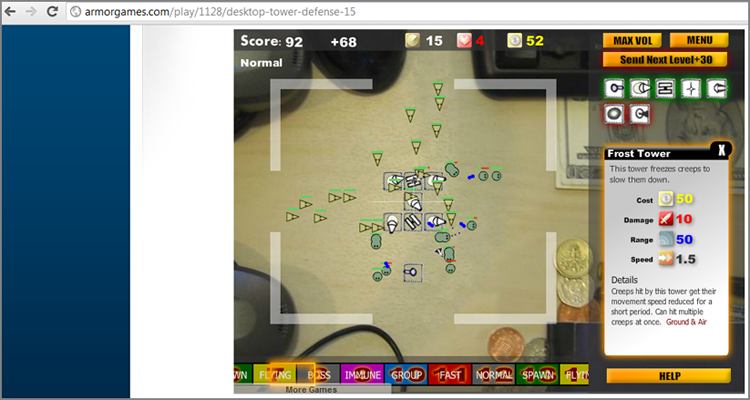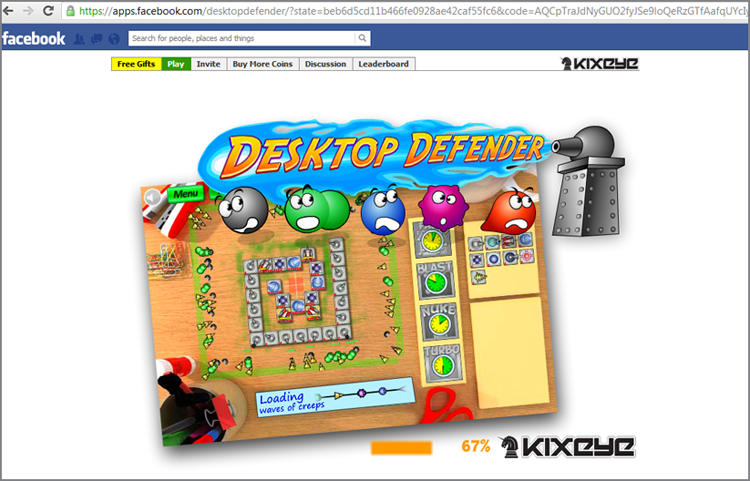Learning from Desktop Tower Defense—and What Its Developer Learned the Hard Way
When Paul Preece launched his Flash game Desktop Tower Defense in 2007 (see Figure 9-3), he was just a Visual Basic programmer with no professional experience in game development. Within three years, he’d become a co-founder of KIXEYE, one of the industry’s most profitable social gaming companies.
Figure 9-3: Desktop Tower Defense

The game became phenomenally popular, played by upwards of 150 million people, but as noted in the beginning of this book, Preece considers it a failure, since it didn’t earn the money it could have had he made some simple tweaks.
Ironically, KIXEYE went on to deploy Desktop Defender, a version of Desktop Tower Defense, on Facebook (see Figure 9-4). It wasn’t very popular, but because it was far better monetized, it earned about as much money as the far more popular original version on the web.
Figure 9-4: Desktop Defender on Facebook

So if Preece could do Desktop Tower Defense over again, what would he do? Read on to find out.
Prepare for Success ...
Get Game Design Secrets now with the O’Reilly learning platform.
O’Reilly members experience books, live events, courses curated by job role, and more from O’Reilly and nearly 200 top publishers.

